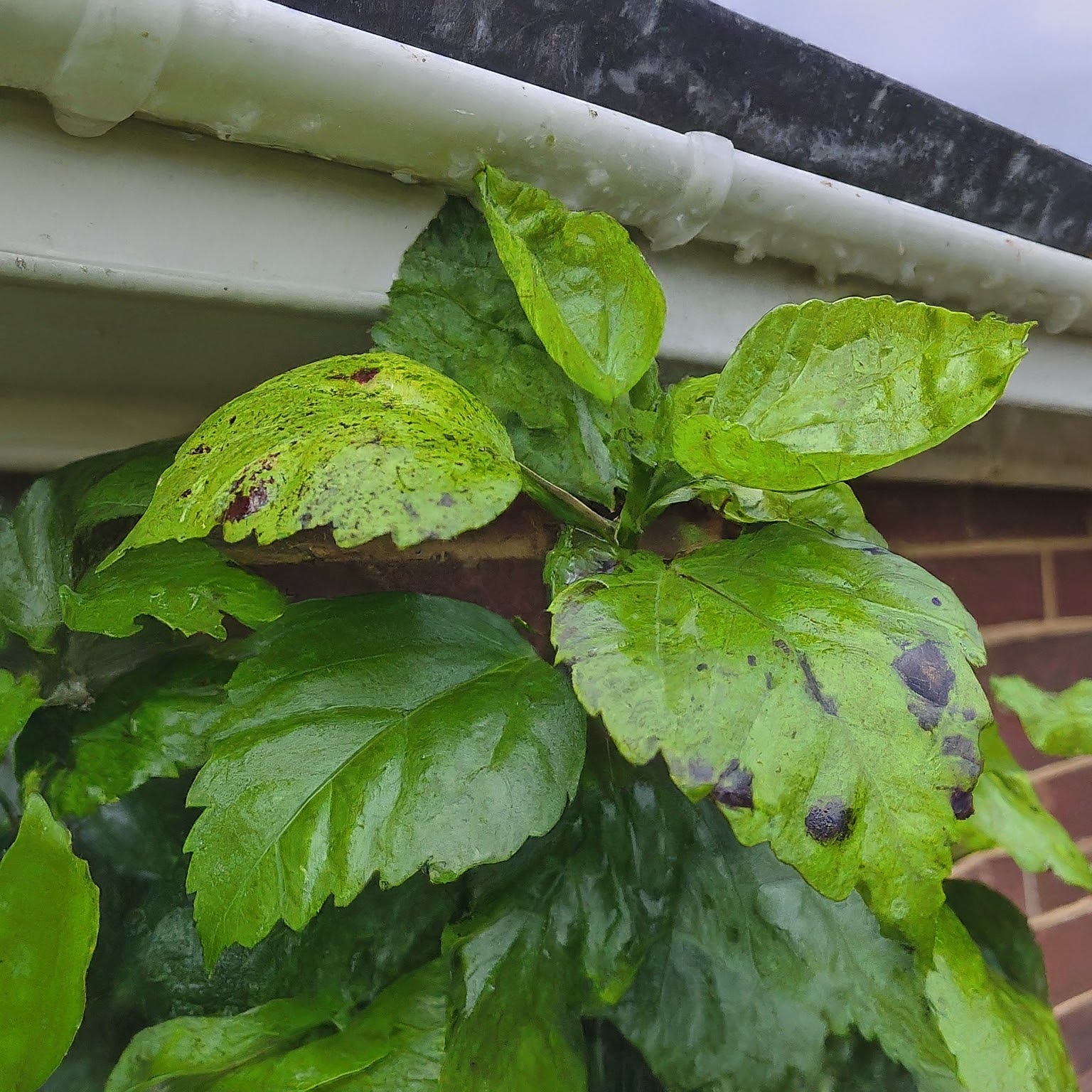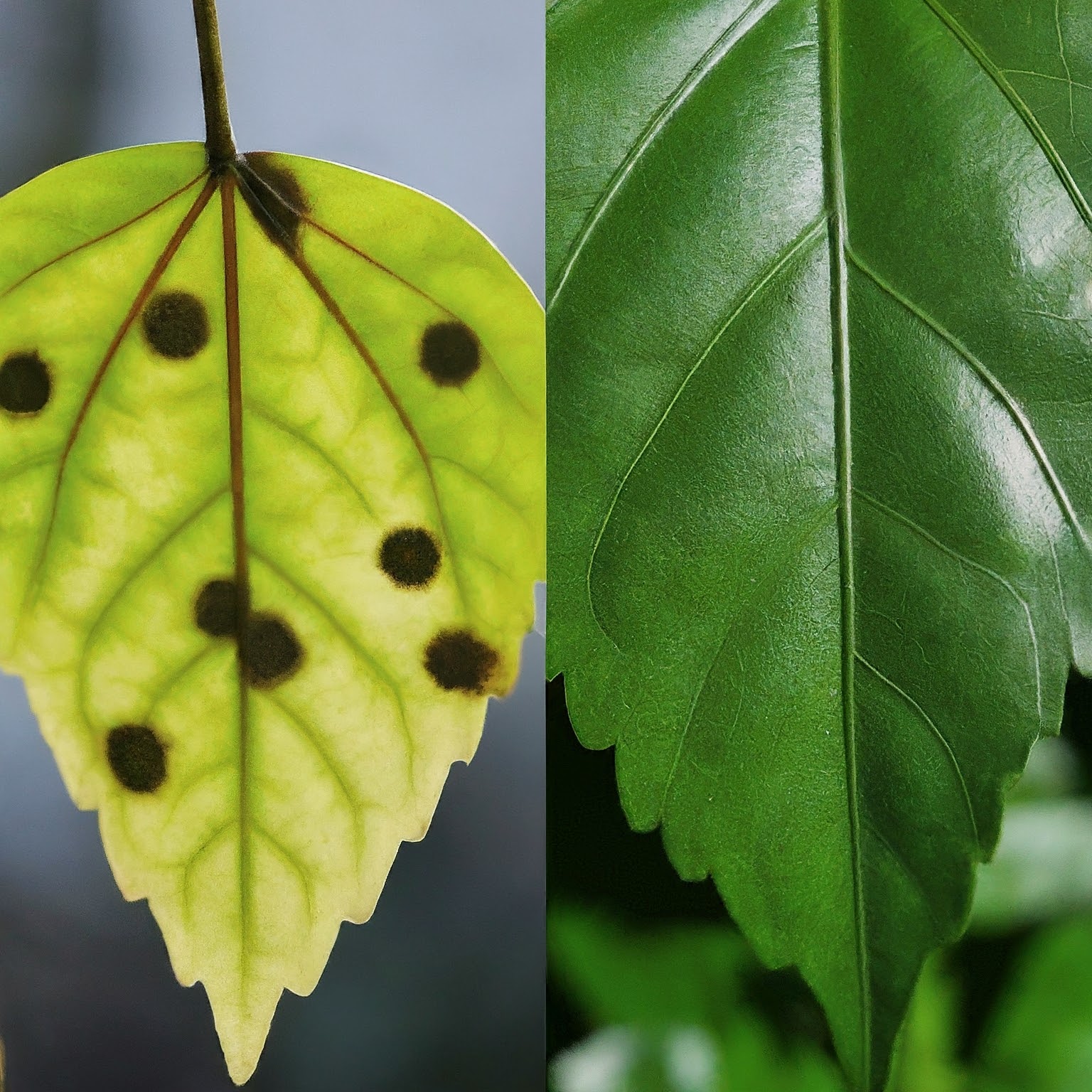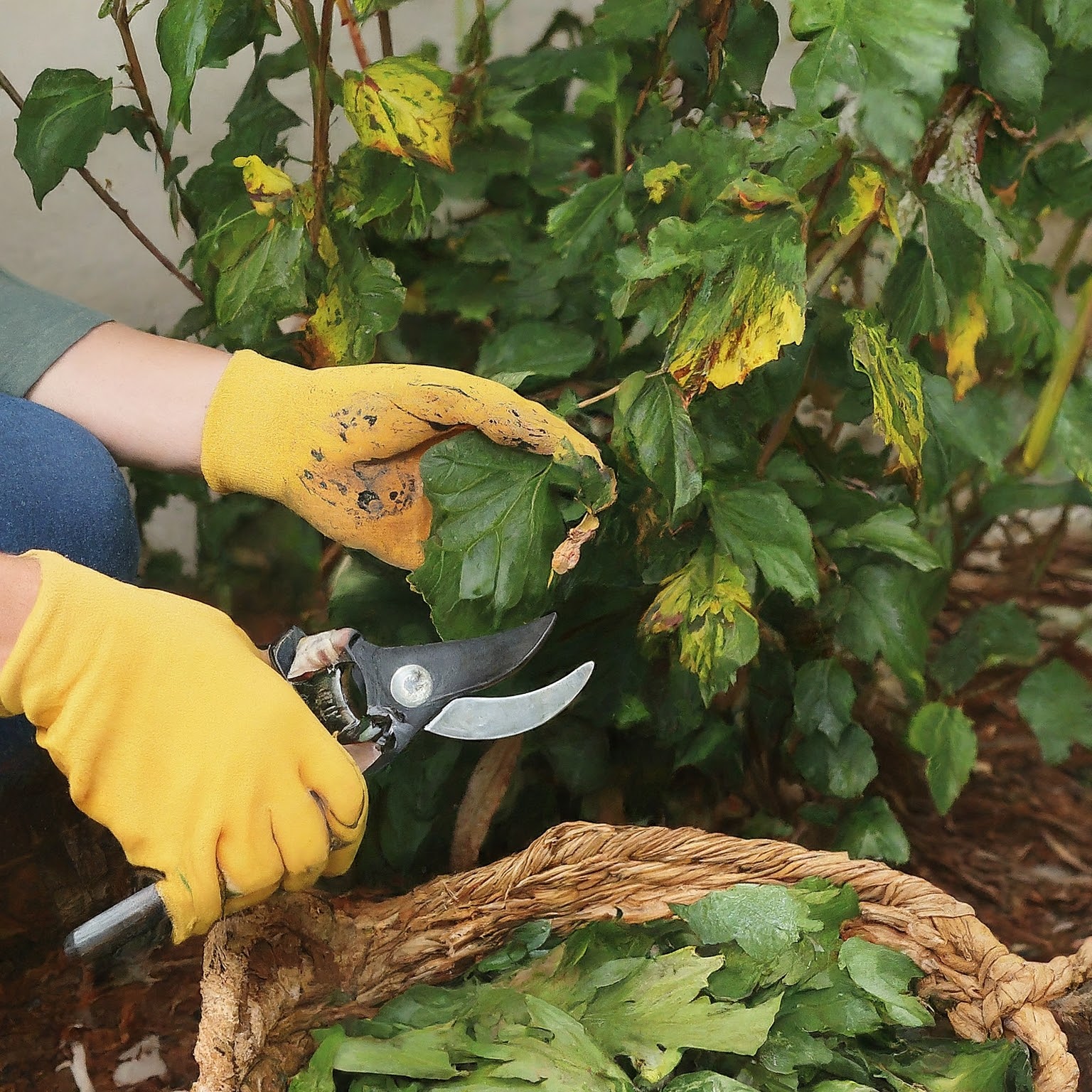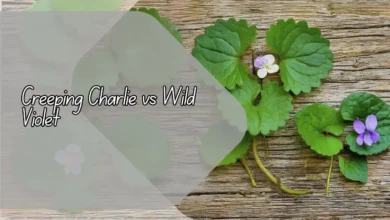
Troubleshooting Black Spots on Hibiscus Leaves
In this article, we will discuss common causes of black spots on hibiscus leaves and how to troubleshoot this issue to keep your plants healthy and thriving.
What are the common causes of black spots on hibiscus leaves?
Black spots on hibiscus leaves can be caused by various factors, including:
- Fungal diseases such as anthracnose or sooty mold
- Bacterial infections
- Poor air circulation
- Overwatering
Identifying the cause of the black spots is crucial in determining the appropriate troubleshooting methods.

How can fungal diseases cause black spots on hibiscus leaves?
Fungal diseases such as anthracnose can result in black spots on hibiscus leaves. These diseases thrive in warm, humid conditions, which are common in gardens. Fungi can infect the leaves through wounds or cuts, spreading rapidly if not controlled.
To prevent fungal diseases, ensure proper air circulation around the plant, avoid overhead watering, and remove any infected leaves promptly. Fungicides may also be applied as a preventative measure.

What are bacterial infections and how do they cause black spots on hibiscus leaves?
Bacterial infections can also lead to black spots on hibiscus leaves. These infections typically occur when the plant is stressed or injured, providing an entry point for bacteria to invade. Overcrowding, poor soil drainage, or improper watering practices can contribute to bacterial infections.
To prevent bacterial infections, maintain a healthy environment for your hibiscus plants by providing adequate spacing, well-draining soil, and proper watering techniques. Infected plants should be isolated and treated with a suitable bactericide.

How does poor air circulation contribute to black spots on hibiscus leaves?
Poor air circulation around hibiscus plants can create a favorable environment for fungal and bacterial growth. Stagnant air traps moisture around the leaves, promoting the development of diseases that cause black spots. This issue is common in crowded or sheltered garden spaces.
To improve air circulation, ensure proper spacing between plants, prune any dense foliage blocking airflow, and avoid planting hibiscus in low-lying areas that trap moisture.

Can overwatering lead to black spots on hibiscus leaves?
Overwatering can contribute to the development of black spots on hibiscus leaves by creating a damp environment that encourages fungal growth. Excess moisture around the roots can lead to root rot, weakening the plant’s defense mechanisms against diseases.
To prevent overwatering, water hibiscus plants only when the top inch of soil is dry to the touch. Ensure proper drainage in the planting area and avoid waterlogging the roots, especially during periods of high humidity.
Conclusion
Black spots on hibiscus leaves can be a troubling sight for gardeners, but with proper troubleshooting techniques, it is possible to restore the health of your plants. By identifying the underlying causes, such as fungal diseases, bacterial infections, poor air circulation, or overwatering, you can implement effective solutions to prevent further damage.
Remember to maintain a healthy growing environment for your hibiscus plants, including providing adequate spacing, well-draining soil, and appropriate watering practices. Regular monitoring and prompt action against any signs of disease are key to promoting vibrant and lush hibiscus foliage.
FAQs
How can I prevent black spots on hibiscus leaves?
To prevent black spots on hibiscus leaves, ensure proper air circulation, avoid overwatering, provide adequate spacing between plants, and promptly remove any infected leaves. Regularly monitor your plants for signs of disease and take preventive measures when necessary.
Can black spots on hibiscus leaves be treated with home remedies?
While some home remedies like neem oil or baking soda solutions may help control fungal diseases on hibiscus leaves, severe infections may require the use of commercial fungicides or bactericides. Consult with a local garden center or horticulturist for advice on the most effective treatment for your specific situation.
Are black spots on hibiscus leaves harmful to the plant’s overall health?
Black spots on hibiscus leaves can impact the plant’s overall health if left untreated. These spots indicate the presence of diseases that weaken the plant’s immune system and can lead to further complications if not addressed promptly. Proper troubleshooting and preventive measures are essential to maintain the vigor of your hibiscus plants.
What is the best time to troubleshoot black spots on hibiscus leaves?
It is recommended that black spots on hibiscus leaves be troubleshooted as soon as they are detected. Early intervention can prevent the spread of diseases and minimize the damage to your plants. Regular inspections and proactive measures will help maintain the health and vitality of your hibiscus foliage.
Can black spots on hibiscus leaves affect other plants in my garden?
If left unaddressed, diseases causing black spots on hibiscus leaves can spread to other plants in your garden, especially those in close proximity. Proper plant care, preventive measures, and isolation of infected plants can help contain the spread of diseases and protect the overall health of your garden.








